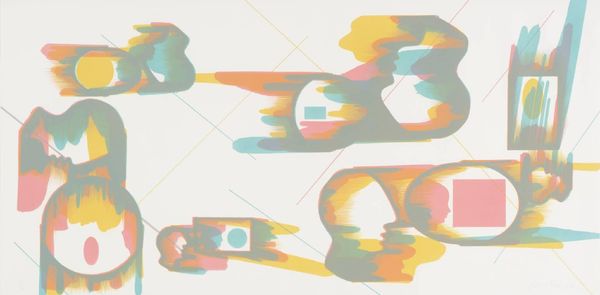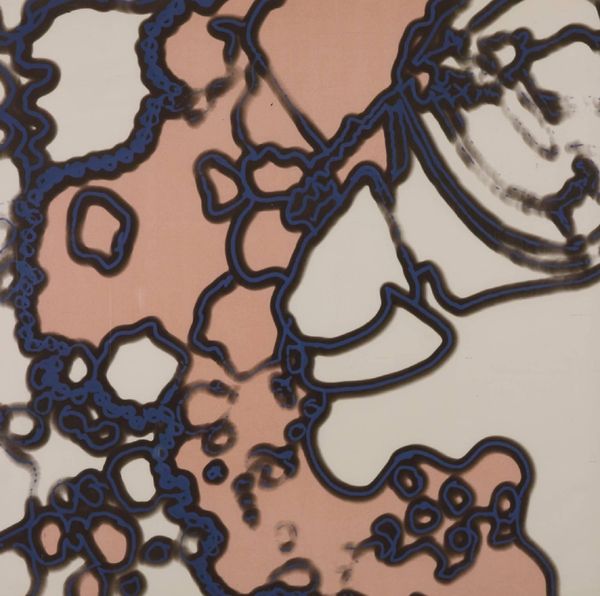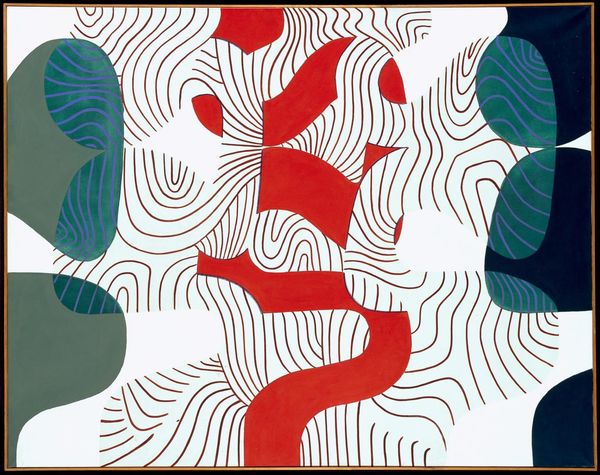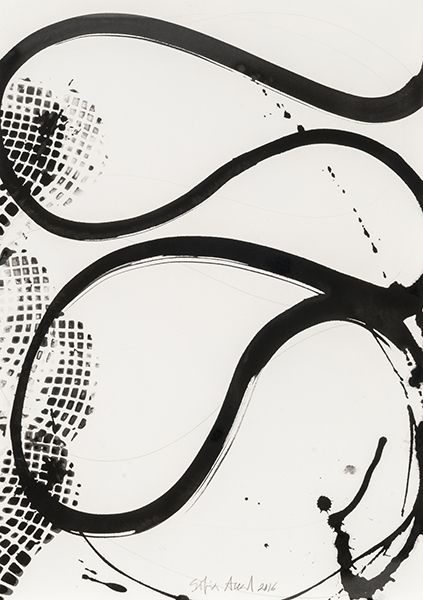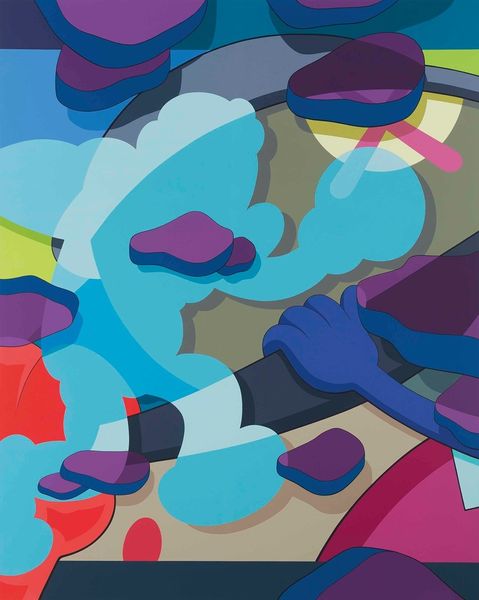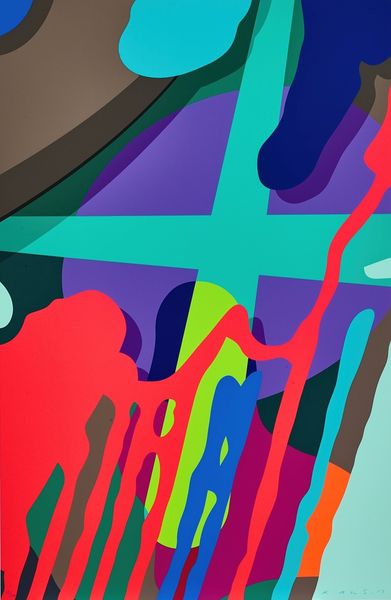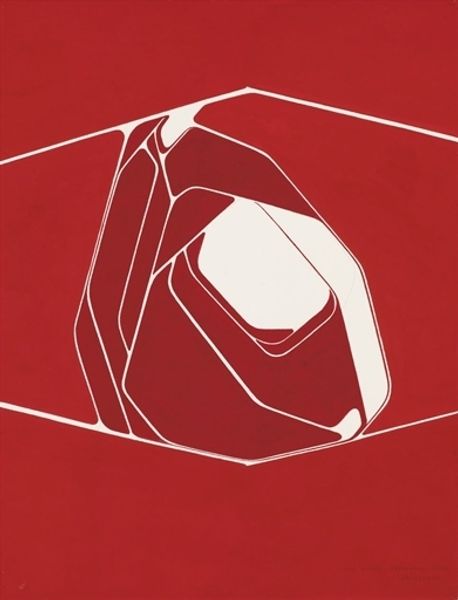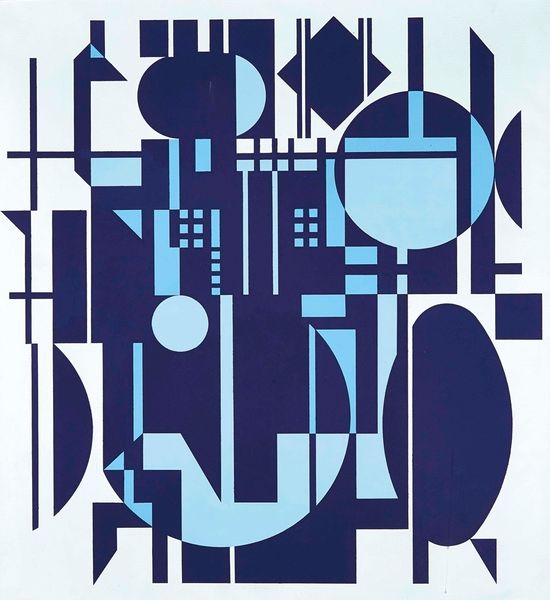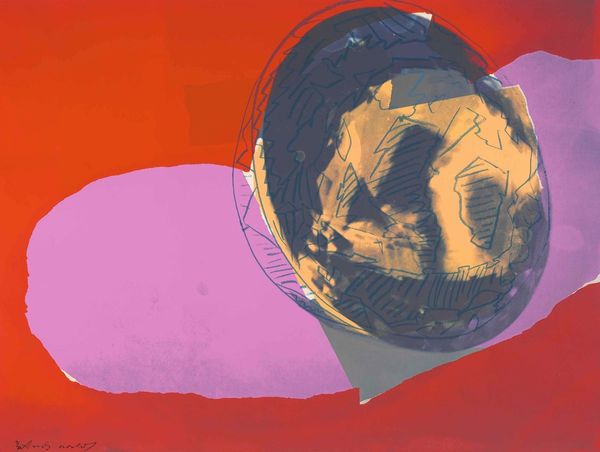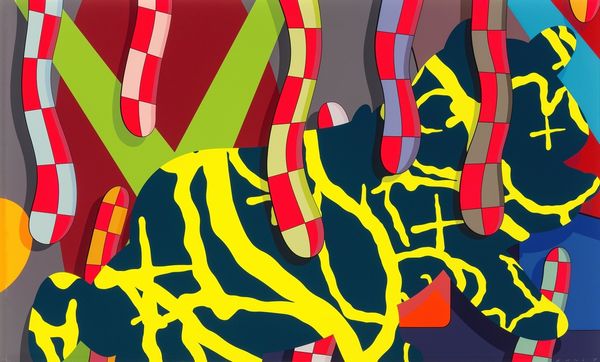
Dimensions: object: 2110 x 2610 x 95 mm
Copyright: © Michael Craig-Martin | CC-BY-NC-ND 4.0 DEED, Photo: Tate
Editor: So, this is Michael Craig-Martin's "Full Life" from the Tate collection. It's a large-scale work, with what appear to be household objects outlined in white against a strong blue. What do you make of the stark presentation? Curator: It highlights the industrial processes involved in both the creation of the artwork itself and the production of the depicted objects. Look at the flatness, the graphic quality – it draws attention to the materiality of paint and the act of making. Do you see how the outlines deny any illusion of depth or volume? Editor: Yes, it flattens everything, making it almost like a blueprint. Is that a comment on consumerism or the disposable nature of these everyday objects? Curator: Precisely! The work becomes a record of material culture, emphasizing the means of production and consumption, rather than any inherent artistic value. What implications do you think follow? Editor: That's a great point. I hadn't considered the work as a record, it really changes the way I see it.
Comments
Join the conversation
Join millions of artists and users on Artera today and experience the ultimate creative platform.
tate 6 months ago
⋮
Full Life is a large relief consisting of a painting combined with metal sculptural elements, which depicts a number of objects – a fork, a set of three keys, a safety pin and a handgun – at much larger than life size. These are represented using white lines against a uniform blue background, as well as thin, black metal rods that extend beyond the edges of the support, so that when the work is displayed the metal parts are set against the wall of the exhibition space. Although they are depicted as if three-dimensional, the way in which the items are superimposed over one another and presented without any accompanying environmental cues makes it difficult to ascertain clear spatial relationships between them. Furthermore, they appear out of proportion with one another: the safety pin, for instance, is as large as the pistol. The objects are all depicted in the same highly stylised manner, which is reminiscent of diagrammatic drawings or commercial illustrations.


